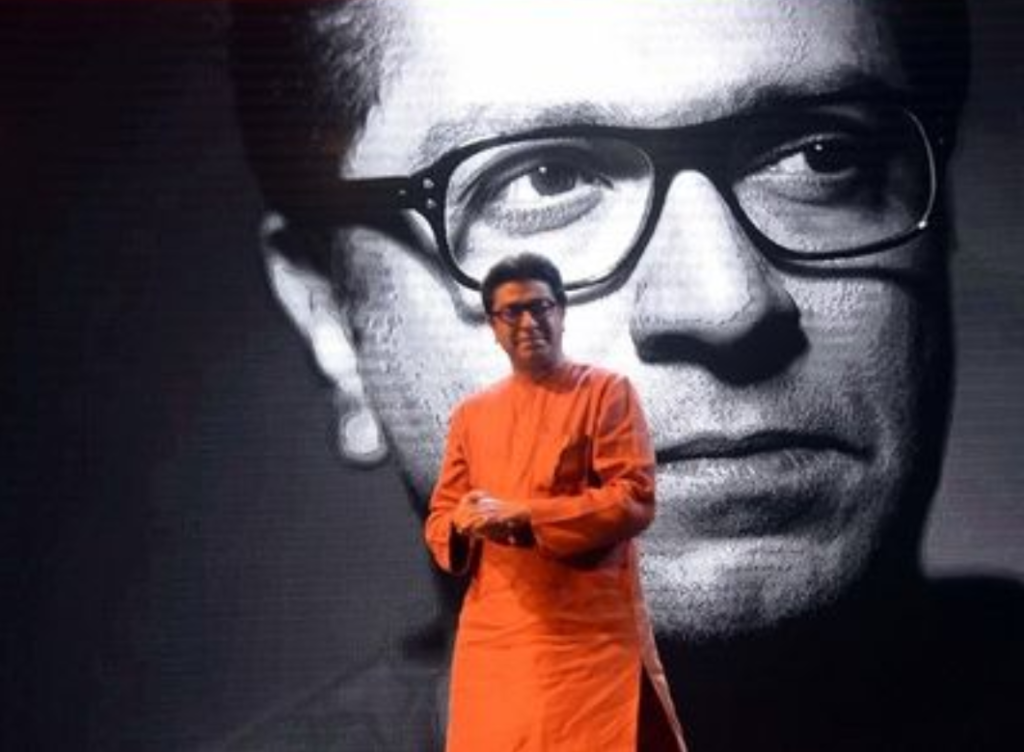Raj Thackeray’s Maharashtra Navnirman Sena (MNS) had recently rebranded itself from its previously Maratha-centric outlook to now a party perceivably committed to Hindutva. The change in the strategy has been evident since January 23, when the party changed the flag colour to full saffron and Raj Thackeray addressed the gathering as “Hindu brothers and sisters” rather than “Marathi brother and sisters”, as he used to do earlier.
Many leaders of Shiv Sena, who were not happy with the party’s decision to ally with Congress and NCP in order to grab CM chair, are joining MNS after the party adopted a pro-Hindutva stance. These leaders view Raj Thackeray as heir to Bal Thackeray and next Hindutva icon.
Former Shiv Sena MLA Harshwardhan Jadhav, and party’s Aurangabad leader Suhas Dashathe, who has been in Shiv Sena for 38 years, joined MNS a few days ago. Former BJP leader Pramod Mahajan’s Brother, Prakash Mahajan, also joined the 51 years Raj Thackeray. According to Mahajan, “Raj Thackeray will emerge as the iconic leader of Hindutva in the time to come and Hindutva needs him.”
Raj Thackeray is set to hold a big rally in South Bombay, against the illegal infiltrators from Pakistan and Bangladesh. According to Thackeray, the majority of the people taking part in ant-CAA, anti-NRC protest are illegal infiltrators from neighbouring Islamic countries. The today’s rally is against the anti-CAA protests going on in many areas of Mumbai.
With the plank of Hindutva, the leaders in opposition camp know well that Raj Thackeray is ‘next big player’ in Maharashtra’s politics. His political rise and career is taking a turn similar to that of Bal Thackeray and Shiv Sena.
Like Shiv Sena, MNS too was found on the Marathi manus (son of the soil) agenda, but, in the mid-1980s, when BJP started raising the temple and Hindutva issues, Bal Thackeray hijacked the issue, and benefitted immensely from that. The CAA is temple issue of Raj Thackeray, whose party is shifting the ideological stance from son of the soil to Hindutva.
When Raj Thackeray formed the party in 2006, his core focus was Marathi Manus (son of the soil) plank, and he raised the issue of Marathi sub-nationalism and anti-immigration in even more chauvinistic way than Shiv Sena. But with the Uddhav Thackeray led the party to compromise on the issues of Marathi Manus (son of the soil plank) and Hindutva, to ally with NCP-Congress, Raj Thackeray is ready to claim the ideological ‘void’ left by Shiv Sena.
Raj Thackeray, who learnt politics from his late uncle and Shiv Sena patriarch, could see that there is a space vacated for Hindutva and son of the soil politics. And Raj Thackeray, given his family legacy, is the best person to fill this space.
Raj Thackeray is a legitimate inheritor of Bal Thackeray’s politics in terms of personality, political oratory, and almost every other political trait. He delivers speeches in the same fashion; chants the same slogans; is a great crowd puller.
On the other hand, Uddhav Thackeray has none of the traits of a popular politician, and therefore he is playing second fiddle to Pawar family members, despite contributing the maximum number of seats in the alliance. He has been made the titular head of state, a de jure leader, put on the chair only to sign on the decisions taken by alliance partners. The plight of Shiv Sena could be witnessed in the portfolio distribution of ministries, where all the significant posts went to NCP.
Raj Thackeray would benefit at the cost of Shiv Sena if he deploys his strategy carefully, as the voter base of both parties is the same. BJP, on the other hand, would find another partner in Maharashtra, which it could call a natural ally, given the ideological similarity. If the parties decided to join hands, both of them will benefit at the cost of Shiv Sena.
